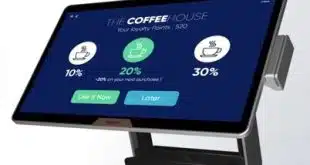After two years of stupendous growth, e-commerce is slowing. But is that the whole story?
The numbers don’t lie, but they don’t tell the whole story, either, about what’s changing for U.S. e-commerce sales.
Consider this. E-commerce sales as a fraction of total retail sales came to 10.2% in the first quarter of 2019, according to U.S. Census Bureau data. A year later, that figure increased to 11.8%—a reasonable rate of growth, since the effects of the Covid pandemic hadn’t yet surfaced. By the first quarter of 2021, 14.9% of retail sales were e-commerce purchases.
Now, in the first quarter of 2022, though still significant, the figure decreased to 14.3%.
The numbers alone make it look like e-commerce’s hot streak is cooling off, but none of this is cause for concern. It’s solely a reflection of the shifting variables of the economy as pandemic restrictions lift, more consumers opt for in-store shopping, and the number of consumers favoring online shopping becomes saturated.
To understand this trend more fully, it helps to look back to e-commerce growth forecasts in 2019. In a mid-year report looking at e-commerce sales from 2017 through 2023, Insider Intelligence, a New York City-based research firm, predicted U.S. e-commerce sales would grow to $858.9 billion by 2022. With the pandemic impact, that figure was topped in 2021 as e-commerce sales totaled $870 billion. Now, U.S. consumers are expected to spend more than $1 trillion online in 2022, predicts Adobe Inc.
The unexpected growth in e-commerce the past couple of years created an outsize year-over-year comparison. The growth rates were so large, says Zak Stambor, senior analyst, retail and e-commerce at Insider Intelligence, that the ensuing quarters faced a difficult year-over-year comparison.
‘Blips, Not Trends’
Understanding this nuance, even when e-commerce sales are growing at a slower pace, is critical, he says. “Those strong year-over-year comparisons are why the numbers don’t look great, but they are ahead of where we thought we would be at this time,” Stambor says.
Payments consultant Patricia Hewitt suggests the same effect. “Thinking about what we might traditionally think of as e-commerce, meaning online buying, I see its growth curve still going up, but more slowly than in the past couple of years,” says Hewitt, principal at PG Research & Advisory Services LLC. “The cost of gas may well drive more consumers to e-buy in order to avoid a trip to the store, however, as we found out post-pandemic, these are more blips than trends.”
These blips may have already appeared. In a May research note, Stambor noted that retail sales yielded a mixed bag of results in the first quarter. “Many retailers last year generated strong sales and healthy profit margins despite rising supply-chain costs,” his note says. “That’s no longer the case. The Q1 [2022] earnings season has been a mixed bag as retailers face no shortage of challenges, including inflationary pressures, supply-chain challenges, global unrest, a tight labor market, and a shift in consumer behavior patterns. But several retailers
have successfully navigated that difficult terrain.”
‘Bifurcated Outlook’
Another factor that may have an impact on e-commerce sales is the growth rate in brick-and-mortar sales. “The other part that is important is we’ve seen a full year in which [the] brick-and-mortar growth rate has outpaced e-commerce,” Stambor says.
Witness Mastercard Inc.’s May SpendingPulse report, which found in-store sales were up 10% and e-commerce sales down 1.8% in April compared to April 2020. It was a similar story in March. In-store sales were up 11.2% year-over-year and e-commerce was down 3.3%.
This in-store momentum largely reflects the fact that consumers are returning to normal lives, Stambor says. “In the case of luxury, that means returning to high-touch experiences you don’t get online,” he says. So consumers are returning to the grocery store rather than having the goods delivered or picked up curbside. Another big difference in 2022 is that more individuals are vaccinated and more have returned to in-office work.
Another big factor this year is inflation, Stambor says. As housing, fuel, and grocery costs increase, consumers who were able to retain their jobs, or switch jobs, and who enjoy higher wages may be able to absorb these costs better than others.
It’s a complicated outlook, he says. “We kind of have a bifurcated outlook going forward,” he says, adding that individuals who are fairly affluent have been faring well. “Their savings rates, while lower than a year ago or two, are likely up from it was pre-pandemic,” Stambor says. “They’re still spending money even if they are pulling back a bit.”
Lower-income consumers, however, are being hit harder by inflation, and that may cause them trade down when shopping, he says. “They’re making all sorts of decisions based largely on where they’re at in terms of savings and their ability to spend on discretionary purposes.”
Hewitt suggests strict definitions of online shopping may need to evolve to reflect how consumers, especially younger ones, incorporated mobile devices into their consumer behavior.
“Are we talking about strictly online sales or all-in virtual sales, which could be payment in app?” she asks. “We’re beginning to see the emergence of a generation that prefers paying by phone regardless of the channel.” A February report from Statista forecasts mobile retail e-commerce sales will total $431.4 billion this year, but by 2025 could grow to $710.4 billion.
‘Generational Shift’
The convergence of mobile and traditional e-commerce with point-of-sale systems may generate a hybrid payments market, Hewitt says. “Now that many merchants have fully enabled NFC, and larger merchants are aggressively pushing their own in-app payments via Quick Response codes, we’ll see more virtual payments at the POS,” she says.
“But this is a generational shift and will take time,” she adds, “perhaps
10 years or more to fully transform the market. In the meantime, pure-play e-commerce will decline in favor of these virtual payments.”
However the payments aspect of e-commerce may evolve, Stambor sees no reason to believe that U.S. e-commerce sales are maxed out. A February forecast for 2022 from Insider Intelligence predicts a 14.1% growth rate for retail e-commerce, he says.
And, in 2023, the growth rate is predicted to be 13.8%. That said, Stambor adds, the growth rate exceeds the inflation rate (8.6% in mid-June). That, he says, is as it should be. “We’re expecting larger growth than that,” he says.
Amazon, Shopify, And The ‘Sawblade’ Sales Pattern
The wave that lifted sales through e-commerce marketplaces during the initial stages of the Covid-19 pandemic is losing energy, according to data from Extensiv, a provider of omnichannel fulfillment solutions.
Growth in average orders per merchant through Shopify Inc. decreased 12% through May compared to 2021, while other marketplaces—including eBay, Etsy, GoogleShopping, Wayfair, Walmart, Yahoo, and ZohoInventory—have decreased 27% year-to-date, according to Extensiv’s Market Insights index, which tracks orders through e-commerce platforms. Amazon is the lone marketplace to see its order volume rise. The e-commerce giant’s volume is up 10% year-to-date.
A provider of omnichannel fulfillment solutions, Extensiv, formerly 3PL Central, launched the index in May in conjunction with a rebranding campaign for the company name. The index is compiled using data from 65 million e-commerce orders into which Extensiv has visibility.
While Extensiv has not surveyed merchants about the ebb and flow of their e-commerce sales, the company says it suspects the drop in average orders per merchant is due to a combination of more in-person shopping and more consumers responding to recent market volatility and rising inflation.
“There are also supply-chain disruptions. Some merchants don’t have inventory to ship right now,” Extensiv chief marketing officer Rachel Trindade says by email. “This is hitting all the big marketplaces. We know UPS is down 8% in Q1 shipments.”
Overall, the trend line for e-commerce volume through marketplaces looks like a saw blade, with weekly volumes rising and falling on a year-over-year basis. During a three-week period beginning the last week of April 2022 (weeks 18-20 of 2022), per-merchant order volume for Shopify Inc., for example, was down 6% during the first week, up 17% the second week, and down 10% the third week.
By comparison with 2020, however, Shopify’s volume was trending downward in 2021. During week 18 of 2021, the marketplace’s per-merchant volume was down 43%, and down 49% and 30% for weeks 19 and 20 of 2021, compared to the same period in 2020.
In comparison to other marketplaces, Amazon’s per-merchant volume remained flat during week 18 and rose 12% and 22% during weeks 19 and 20 of 2022. The change is a welcome one. Amazon’s volume in 2021 was down 70%, 73% and 66%, respectively, compared to those same weeks in 2020.
One explanation why Amazon is faring better than other marketplaces is that the strength of its brand helps shield it from volatility, according to Trindade. “Historically we’ve seen Amazon expand market share in e-commerce each year,” she says. “Amazon’s increased market share is a normal dynamic. This increase may be in part because merchants are still expanding through Amazon.”
Given the up-and-down shifts in sales volumes merchants selling through marketplaces are seeing, Trindade says brands and marketplaces need to stay nimble and pay attention to their own businesses as well as monitor macro trends. “Q1 earnings for Shopify, Amazon, and UPS showed the volatility, and even Amazon let go of some warehouse space last week,” she says.
Nevertheless, Trindade remains optimistic that the sawtooth trend line will eventually reverse itself. “E-commerce has experienced double-digit growth every year for the past few years. We expect a rebound, we just don’t know when that will be,” she says.
—Peter Lucas






